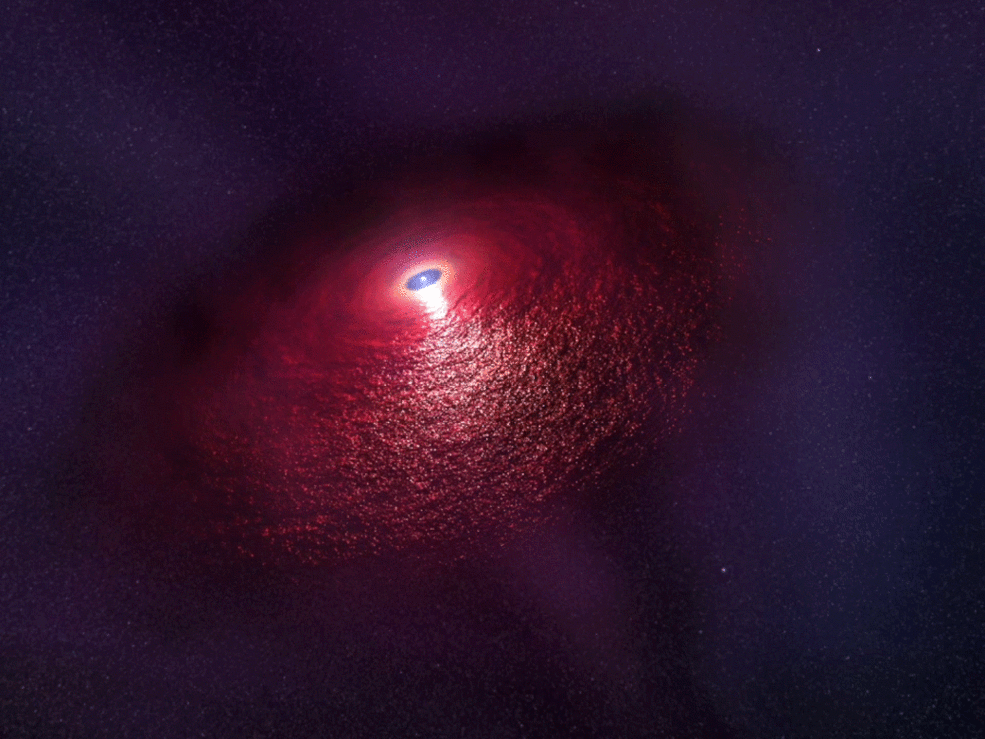Weird Infrared Signal Emanates Across Space, But What Created It?

Space is filled with bizarre signals that we scramble to put meaning to — and now, researchers have detected yet another mysterious signal. This one emanated from near a neutron star, and for the first time, it's infrared.
So, what's nearby that could have created the weird signal? Scientists have a few ideas.
When a star reaches the end of its life, it typically undergoes a supernova explosion— the star collapses, and if it has enough mass, it will form a black hole. But if the star isn't massive enough, it will form a neutron star. [Supernova Photos: Great Images of Star Explosions]
Neutrons stars are very dense and, as their name suggests, are made up mostly of closely packed neutrons. Neutron stars can also be called "pulsars" if they are highly magnetized and rotate rapidly enough to emit electromagnetic waves, according to Space.com.
Typically, neutron stars emit radio waves or higher-energy waves such as X-rays, according a statement released by NASA yesterday (Sept. 17). But an international group of researchers from Penn State, the University of Arizona and Sabanci University in Turkey observed something interesting in NASA's Hubble Space Telescope data: a long signal of infrared light emitted near a neutron star, the researchers reported yesterday in The Astrophysical Journal.
This signal, they found, was about 800 light-years away and was "extended," meaning it was spread across a large stretch of space, unlike typical "point" signals from neutron stars that emit X-rays. Specifically, the signal stretched across 200 astronomical units (AU) of space, or 2.5 times the orbit of Pluto around the sun, according to a statement from Penn State. (One AU is the average distance from Earth to the sun — about 93 million miles, or 150 million kilometers.)
Such extended signals have been observed before, but never in the infrared, lead author Bettina Posselt, an associate research professor of astronomy and astrophysics at Penn State, told Live Science.

Based on previous data, the amount of infrared radiation is much more than the neutron star should be emitting, Posselt said. So "all of the emission in infrared we see is likely not coming from the neutron star itself," Posselt said. "There's something more."
The neutron star in question, RX J0806.4-4123, is one of the nearby X-ray pulsars collectively known as the Magnificent Seven. They are bizarre characters: They rotate much more slowly than typical neutron stars (it takes 11 seconds for one rotation of RX J0806.4-4123, whereas typical ones rotate in a fraction of a second), and they're much hotter than they should be based on when they formed.
In their study, the researchers proposed two possibilities for what could have snuggled up near RX J0806.4-4123 and emitted these mysterious signals: a disk of dust that surrounds the pulsar, or a "pulsar wind nebula."
A "fallback disk" — that could stretch 18 billion miles across — could have formed from the remnants of a resident star following a supernova explosion, Posselt said. Such disks that "have been long searched for, but not found" would most likely be made up mainly of dust particles, she added.
The inner part of such a disk would likely have enough energy to produce infrared light, Posselt said. This could also help explain why RX J0806.4-4123 is so hot and spins so slowly. "The disks in the past could have provided some extra heating," and also slowed down its rotation, Posselt said.
The second explanation is that perhaps the infrared signal is coming from a nearby pulsar wind nebula.
A pulsar wind can form when electrons from a neutron star are accelerated in an electric field produced by the neutron star's fast rotation and strong magnetic field, according to the NASA statement. As the neutron star moves through space, typically faster than the speed of sound, it crashes into the interstellar medium — those tiny bits of gas and dust that reside between large celestial objects. The interaction between the interstellar medium and the pulsar wind can produce the so-called pulsar wind nebula, which could give off infrared radiation, Posselt said.
Pulsar wind nebulas are typically seen emitting X-rays, so a pulsar wind nebula that radiates only in the infrared is "definitely interesting," Posselt said.
Originally published on Live Science.
Sign up for the Live Science daily newsletter now
Get the world’s most fascinating discoveries delivered straight to your inbox.

Yasemin is a staff writer at Live Science, covering health, neuroscience and biology. Her work has appeared in Scientific American, Science and the San Jose Mercury News. She has a bachelor's degree in biomedical engineering from the University of Connecticut and a graduate certificate in science communication from the University of California, Santa Cruz.
Most Popular

By Owen Jarus
